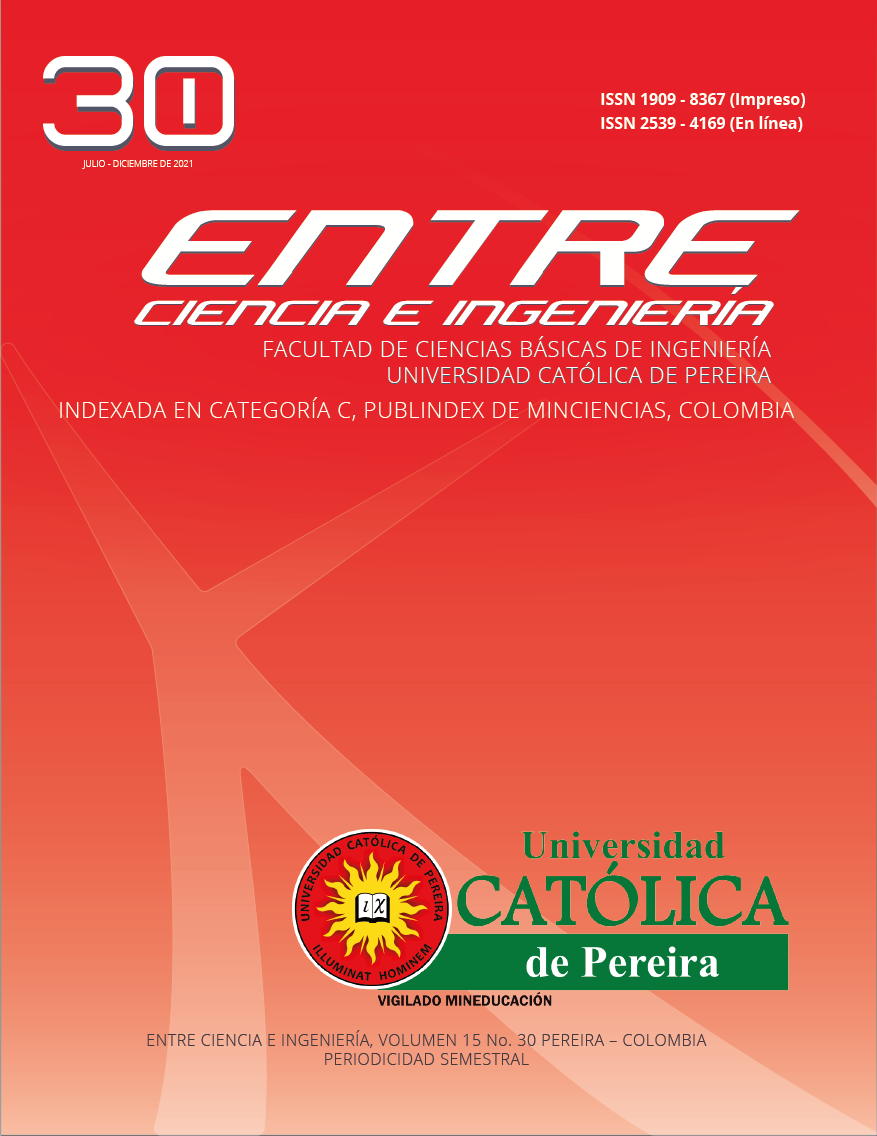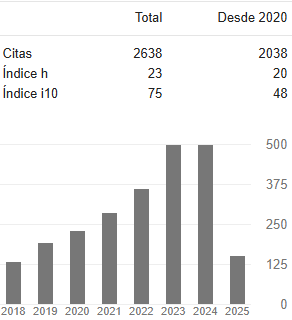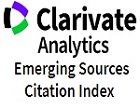Una visión actualizada sobre la síntesis, escalado y aplicaciones de las nanoemulsiones dobles
DOI:
https://doi.org/10.31908/19098367.2095Palabras clave:
Nanoemulsión, Nanoemulsión doble, Microemulsi´ón, emulsificación, emulsión sub-micrométricaResumen
Las nanoemulsiones son sistemas emulsionados de tamaño nanométrico. Estas pueden ser producidas mediante diversos métodos, los cuales se pueden clasificar como métodos de baja y alta energía. La disminución en el tamaño de glóbulo formado permite que estas puedan penetrar con mayor facilidad diferentes barreras como la piel o la barrera gastrointestinal. De este modo la encapsulación de compuestos activos a través de nanoemulsiones permite mejorar su biodisponibilidad. Además de ofrecer protección frente a factores ambientales como temperatura, humedad o radiación UV. Asimismo, es posible formular nanoemulsiones dobles con el fin de encapsular moléculas de naturaleza hidrofílica y lipofílica en un solo glóbulo. Este proceso de formación requiere un análisis integral que incluye aproximaciones físicas y termodinámicas.
Descargas
Referencias
F. Goodarzi, S. Zendehboudi, “A Comprehensive Review on Emulsions and Emulsion Stability in Chemical and Energy Industries”, The Canadian Journal of Chemical Engineering, vol. 97, no. 1, pp. 281-309, 2018.
N.A.N. Azmi, A.A.M. Elgharbawy, S.R. Motlagh, N. Samsudin, H.M. Salleh, “Nanoemulsions: Factory for Food, Pharmaceutical and Cosmetics”, Processes, vol. 7, no. 9, pp. 617, 2019.
T. Sheth, S. Seshadri, T. Prileszky, M. E. Helgeson, “Multiple nanoemulsions”, Nature Reviews Materials, vol. 5, pp. 214-228, 2020.
S.N. Kale, S.L. D, “Emulsion Micro emulsion and Nano Emulsion: A Review”, Systematic Reviews in Pharmacy, vol. 8, no. 1, pp. 39-47, 2017.
N. Anton, T.F. Vandamme, “The universality of low-energy nano-emulsification”, International Journal oh Pharmaceutics, vol. 377, no.1-2, pp.142-147, 2009.
N. Anton, T.F. Vandamme, “Nano-emulsions and Micro-emulsions: Clarifications of the Critical Differemces”, Pharmaceutical Research, vol. 28, no. 5, pp.978-985, 2010.
P. Karthik, C. Anandharamakrishnan, “Fabrication of a nutrient delivery system of docosahexaenoic acid nanoemulsions via high energy techniques”, vol. 6, no. 5, pp.3501-3513, 2016.
Dammak, R. A. de Carvalho, C. S. F. Trindade, R. V. Lourenço, P. J. do Amaral, “Properties of active gelatin films incorporated with rutin-loaded nanoemulsions”, International Journal of Biological Macromolecules, vol. 98, pp.39-49, 2017.
G. Lefebvre, J. Riou, G. Bastiat, E. Roger, K. Frombach, J. C. Gimel, P. Saulnier, B. Calvignac, “Spontaneous nano-emulsification: Process optimization and modeling for the prediction of the nanoemulsion’s size and polydispersity”, International Journal of Pharmaceutics, vol. 534, no. 1-2, 2017.
T. Mehmood, A. Ahmed, A. Ahmad, M. S. Ahmad, M. A. S, “Optimization of mixed surfactants-based β-carotene nanoemulsions using response surface methodology: An ultrasonic homogenization approach”, Food Chemistry, vol. 253, pp. 179-184, 2018.
J. McClements, “Nanoemulsions versus microemulsions: terminology, differences and similarities”, Soft Matter, vol. 8, no. 6, pp.1719-1729, 2012.
R. J. Hunter. Foundations of colloid science, vol II. 1st ed. Oxford: Oxford University Press, 1989.
T. F. Tadros. “Emulsion Formation, Stability and Rheology” in Emulsion Formation and Stability, T. F. Tadros, 1st ed. Weinheim: Wiley-VCH, pp.1-75, 2013.
G. G. Láng, “Basic interfacial thermodynamics and related mathematical background”, ChemTexts, vol. 1, no.16, pp.1-17, 2015.
S. Rawal, M. Patel, “Lipid nanoparticulate systems: Modern versatile drug carriers” in Lipid Nanocarriers for Drug Targeting, 1st ed. Elsevier William Andrew, pp.49-138, 2018.
S. Obravić, M. Poša, “Th influence of the structure of selected Brij and Tween homologues on the thermodynamic stability of their binary mixed micelles”, Journal of Chemical Thermodynamics, vol. 110, pp.41-50, 2017.
S. Slomkowski, J. Alemán, J. Gilbert, G. Hess, K. Horie, R. Jones, “Terminology of polymers and polymerization process in dispersed systems (IUPAC Recommendations 2011), Pure and Applied Chemistry, vol.83, no.12, pp.2229-2259, 2011.
Solans, I. Solé, “Nano-emulsions: Formation by low-energy methods”, Current Opinion in Colloid & Interface Science, vol.17, no.5, pp.246-254, 2012.
C. Lovelyn, A. Attama, “Current state of Nanoemulsion in Drug Delivery”, Journal of Biomaterials and Nanobiotechnology, vol. 2, no.5, pp.629-639, 2011.
S. Nemichand, S. Laxman, “Emulsion Micro Emulsion and Nano Emulsion: A Review”, Systemic Reviews in Pharmacy, vol.8, no.1, pp.39-47, 2017.
Acosta, E. Szekeres, J. Harwell, B. Grady, D. Sabatini, “Morphology of ionic microemulsions: comparison of SANS studies and the net-average curvature (NAC) model”, Soft Matter, vol.5, no.3, pp.551-561, 2008.
S. Kiran, E. Acosta, “Predicting the morphology and viscosity of Microemulsions Using the HLD-NAC Model”, Industrial & Engineering Chemistry Research, vol.49, no.7, pp.3424-3432, 2010.
B. Lukanov, A. Firoozabadi, “Molecular Thermodynamic Modeling of Reverse Micelles and Water-in-oil Miroemulsions”, Langmuir, vol.32, no.13, pp.3100-3109, 2016.
M. Turchi, Q. Cai, G. Lian, “In silico Prediction of the Thermodynamic Equilibrium of Solute Partition in Multiphase Complex Fluids: A Case Study of Oil-Water Microemulsion”, Langmuir, vol.35, pp.10855-10865, 2019.
K. Motomura, J. Baret, “Thermodynamic Consideration of Microemulsions”, Journal of Colloid and Interface Science, vol.91, no.2, pp.391-399, 1982.
Tartaro, H. Mateos, D. Schirone, R. Angelico, G. Palazzo, “Microemulsion Microstructure(s): A Tutorial Review”, Nanomaterials, vol.10, no.9, pp.1657, 2020.
Ruckenstein, “Phase Inversion Temperatures of Macro- and Microemulsions”, Langmuir, vol.13, no.9, pp.2494-2497, 1997.
Kaptay, “Partial Surface Tension of Components of a Solution”, Langmuir, vol.31, no.21, pp.5796-5804, 2015.
Kaptay, “On the Negative Surface Tension of Solutions and on Spontaneous Emulsification”, Langmuir, vol.33, no.40, pp.10550-10560, 2017.
S. Ding, N. Anton, S. Akram, M. Rafik, H. Anton, A. Klymchenko, W. Yu, T. Vandamme, C. Serra, “A new method for the formulation of double nanoemulsions”, Soft Matter, vol.13, pp.1660-1669, 2017.
Håkansson, M. Rayner, “General Principles of Nanoemulsion Formation by High-Energy Mechanical Methods” in Nanoemulsions: Formulation, Applications and Characterization, S. Mahdi, D. McClements, 1 ed., Elsevier, pp.103-139, 2018.
Gupta, H. Burak, T. Hatton, P. Doyle, “Controlling and predicting droplet size of nanoemulsions: scaling relating with experimental validation”, Soft Matter, vol.12, pp.1452-1458, 2016.
Håkansson, “Fabrication of Nanoemulsions by High-Pressure Valve Homogenization” in Nanoemulsions: Formulation, Applications and Characterization, S. Mahdi, D. McClements, 1 ed., Elsevier, pp.175-206, 2018.
J. Davies, “A physical interpretation of Drop Sizes In Homogenizers and Agitated Tanks, Including the Dispersion of Viscous Oils”, Chemical Engineering Science, vol.42, no.5, pp.1683-1692, 2010.
M. Kanouni, H. Rosano, N. Naouli, “Preparation of a stable double emulsion (W1/O/W2): role of the interfacial films on the stability of the system”, Advances in Colloid and Interface Science, vol.99, no.3, pp.339-354, 2002.
P. Gharehbeglou, S. Jafari, A. Homayouni, H. Hamishekar, H. Mirzaei, “Fabrication of double W1/O/W2 nano-emulsions loaded with oleuropein in the internal phase (W1) and evaluation of their release rate”, Food Hydrocolloids, vol.89, pp.44-55, 2019.
J. Hanson, C. Chang, S. Graves, Z. Li, T. Mason, T. Deming, “Nanoscale double emulsions stabilized by single-component block copolypeptides”, Nature Letters, vol.455, pp.85-88, 2008.
S. Kim, K. Kim. S. Choi, “Controllable one-step double emulsion formation via phase inversion”, Soft Matter, vol.14, no.7, pp.1094-1099, 2018.
Y. Zhao, J. Zhang, Q. Wang, J. Li, B. Han, “Water-in-oil-in-water double nanoemulsion induced by CO2”, Physical Chemistry Chemical Physics, vol.13, pp.684-689, 2010.
R. Zhang, J. Liu, J. He, B. Han, Z. Liu, T. Jiang, W. Wu, L. Rong, H. Zhao, B. Dong, G. Hu, “Compressed Ethylene-Assisted Formation of the Reverse Micelle of PEO-PPO-PEO Copolymer”, Macromolecules, vol.36, pp.1289-1294, 2003.
R. P, M. Taurozzi, C. Bregni, “Some considerations about the hydrophilic-lipophilic balance system”, International Journal of Pharmaceutics, vol.356, pp.44-51, 2008.
Y. Yamashita, K. Sakamoto, “Hydrophilic-Lipophilic Balance (HLB) Classical Indexation and Novel Indexation of Surfactant” in Encyclopedia of Biocolloid and Biointerface Science, 2 Volume Set, H. Ohshima, 1st ed., Jhon Wiley & Sons, pp-570-574, 2016.
K. Corin, C. O’Connor, “A proposal use excess Gibbs energy rather than HLB number as an indicator of the hydrophilic-lipophilic as an indicator of the hydrophilic-lipophilic behavior of surfactants”, Mineral Engineering, vol.58, pp.17-21, 2014.
T. Nguyen, C. Morgan, L. Poindexter, J. Fernandez, “Application of the Hydrophilic-Lipophilic Deviation Concept to Surfactant characterization and Surfactant Selection for Enhanced Oil Recovery”, Journal of Surfactants and Detergents, vol. 22, no.5, pp.983-999, 2019.
J. Wu, Y. Dabros, H. Hamza, “Development of a method for measurement of relative solubility of nonionic surfactants”, Colloid and Surfaces A: Physicochemical Engineering Aspects, vol.232, pp.229-237, 2004.
W. Lu, D. Huang, C. Wang, C. Yeh, J. Tsai, Y. Huang, P. Li, “Preparation, characterization and antimicrobial activity of nanoemulsions incorporating citral essential oil”, Journal of Food and Drug Analysis, vol.26, no.1, pp.82-89, 2018.
W. Chong, C. Tan, Y. Cheah, A. Lajis, M. Habi, S. Kanagaratnam, O. Lai, “Optimization of process parameters in preparation of tocotrienol-rich palm oil-based nanoemulsions stabilized by Tween80-Span80 using response surface methodology”, PLoS One, vol.13, no.8, e0202771, 2018.
Juárez, J. García, “Structures similar to lipid emulsions and liposomes Dipalmitoylphophatidylcholine, cholesterol, Tween20-Span20 or Tween80-Span80 in aqueous media”, Journal of Liposome Research, vol.27, no.2, pp.139-150, 2017.
N. Leister, H. Karbstein, “Evaluating the stability of Double emulsions-A review of the Measurement Techniques for the Systemic Investigation of Instability Mechanisms”, vol.4, no.8, pp.1-18, 2020.
M. Koroleva, T. Nagovitsina, E. Yurtov, “Nanoemulsions stabilized by non-ionic surfactants: stability and degradation mechanism”, Physical Chemistry Chemical Physics, vol.20, no.15, pp.10369-1037, 2018.
T. Delmas, H. Piraux, A. Couffin, I. Texier, F. Vinet, P. Poulin, M. Cates, J. Bibette, “How to Prepare and Stabilize Very Small Nanoemulsions”, Langmuir, vol.27, no.5, pp.1683-1692, 2011.
S. Uluata, E. Decker, D. McClements, “Optimization of Nanoemulsion Fabricating Using Microfluidization: Role of Surfactant concentration and Stability”, Food Biophysics, vol.11, no.1, pp.52-59, 2015.
S. Tang, M. Sivakumar, “Design and evaluation of aspirin-loaded water-in-oil-in-water submicron multiple emulsions generated using two-stage ultrasonic cavitational emulsification technique”, Asia-Pacific Journal of Chemical Engineering, vol.7, pp.145-156, 2012.
Bamba, J. Shi, C. Tranchant, S. Xue, C. Forney, L. Lim, W. X, G. Xu, “Co-encapsulation of Polyphenols and Anthocyanins from Blueberry Pomace by Double emulsion Stabilized by Whey Proteins: Effect of Homogenization Parameters”, Molecules, vol.23, no.10, pp.2525, 2018.
J. Carpenter, V. Saharan, “Ultrasonic assisted formation and stability of mustard ion in water nanoemulsion: Effect of process parameters and their optimization”, Ultrasonic Sonochemistry, vol.35, pp.422-430, 2017.
Solè, C. Pey, A. Maestro, C. González, M. Porras, C. Solans, J. Gutiérrez, “Nanoemulsions prepared by the phase inversion composition method: Preparation viariables and scale up”, Journal of Colloid and Interface Science, vol.344, pp.417-423, 2010.
Archard, M. Marouche, H. Boisson, “Hydrodynamics and Metzner-Otto correlation in stirred vessels for yield stress fluids”, Chemical Engineering Journal, vol.125, no.1, pp.15-24, 2006.
J. James, M. Cooke, L. Trinh, R. Hou, P. Martin, T. Kowalski, T. Rodgers, “Scale-up of batch rotor stator mixers. Part 1-power constants”, Chemical Engineering Research and Design, vol.124, pp.313-320, 2017.
Peshkoysky, S. Peshkoysky, S. Bystryak, “Scalable high-power ultrasonic technology for the production of translucent nanoemulsions”, Chemical Engineering and Processing, vol.69, pp.77-82, 2013.
Teng, M. He, J. Xu, F. Chen, C. Wu, Z. Wang, Y. Li, “Effect of ultrasonication on the stability and storage of soy protein isolate-phosphatidylcholine nanoemulsions”, Scientific Reports, vol.10, no.1, pp.14010, 2020.
Khadem, N. Sheibat, “Theoretical and experimental investigations of double emulsion preparation by ultrasonication”, Industrial & Engineering Chemistry Research, vol.58, pp.8220-8230, 2019.
S. Ding, C. Serra, T. Vandamme, W. Yu, N. Anton, “Double emulsions prepared by two-step emulsification: History, state-of-the-art and perspective”, Journal of Controlled Release, vol.295, pp.31-49, 2019.
Y. Singh, J. Meher, K. Raval, F. Khan, A. Chaurasia, N. Jain, M. Chourasia, “Nanoemulsion: Concepts, development and applications in drug delivery”, Journal of Controlled Release, vol.252, pp.28-49, 2017.
P. Eslami, L. Davarpanah, F. Vahabzadeh, “Encapsulating role of β-cyclodextrin in formation of Pickering water-in-oil-in-water (W1/O/W2) double emulsions containing Lactobacillus dellbrueckii”, Food Hydrocolloids, vol.64, pp.133-148, 2017.
N. Mohammad, H. Saberian, S. Jafari, “Encapsulation of food ingredients by double nanoemulsions” in Lipid-Based Nanostructures for Food Encapsulation Purposes: Volume 2, S. Jafari, 1st ed., Academic Press, pp.89-128, 2019.
Araiza, M. Akhtar, A. Sarkar, “Recent advances in emulsion-based delivery approaches for curcumin: From encapsulation to bioaccessibility”, Trends in Food Science & Technology, vol.71, pp.155-169, 2018.
N. Aditya, S. Aditya, H. Yang, H. Kim, S. Park, S. Ko, “Co-delivery of hydrophobic curcumin and hydrophilic catechin by a water-in-oil-in-water double emulsion”, Food Chemistry, vol.173, pp.7-13, 2015.
T. Chuacharoen, S. Prasongsuk, C. Sabliov, “Effect of Surfactant Concentrations on Physicochemical Properties and Functionality of Curcumin Nanoemulsions Under Conditions Relevant to Commercial Utilization”, Molecules, vol.24, no.15, pp.2744, 2019.
M. Mehrnia, S. Jafari, B. Makhmal, Y. Maghsoudlou, “Rheological and release properties of double nano-emulsions containing crocin prepared with Angum gum, Arabic gum and whey protein”, Food Hydrocolloids, vol.66, pp.259-267, 2017.
F. González, L. Bravo, “History and present of skin care products, cosmetics and fragances. Especially those derived from plants”, Ars Pharmaceutica, vol.58, no.1, pp.5-12, 2017.
Business Insider, “Beauty has blown up to be a 532 billion industry analysts say that these 4 trends will make it even bigger”, August 2020. [Online]. Available: https://www.businessinsider.com/beauty-multibillion-industry-trends-future-2019-7.
Statista, “Value of the cosmetics market worldwide from 2018 to 2025”, August 2020. [Online]. Available: https://www.statista.com/statistics/585522/global-value-cosmetics-market/
Beauty Packaging, “Top 20 Global Beauty Companies”, August 2020. [Online]. Available: https://www.beautypackaging.com/heaps/view/6459/1
S. Kaul, N. Gulati, D. Verma, S. Mukherjee, U. Nagaich, “Role of Nanotechnology in Cosmeceuticals: A Review of Recent Advances”, Journal of Pharmaceutics, vol.2018, pp.1-19, 2018.
L’Oreal, “Beauty Research & Innovation”, August 2020. [Online]. Available: https://www.loreal.com/en/beauty-science-and-technology/beauty-research-and-innovation
R. Patel, M. Patel, S. Thakore, B. Patel, “Nanoemulsion as a valuable nanostructure platform for pharmaceutical drug delivery” in Nano-and Microscale Drug Delivery Systems: Design and Fabrication, A. Grumezscu, Cambridge, pp-321-341, 2017.
P. Rocha, M. Ferrari, M. Maruno, O. Souza, “In vitro and In vivo Evaluation of Nanoemulsion Containing Vegetable Extracts”, Cosmetics, vol.4, no.32, pp.1-13, 2017.
S. Nunes, P. Quatrin, M. Rorato, K. Nascimento, R. Wagner, B. Klein, R. Vianna, O. Ferreira, “Evaluation of Stability and In vitro security of Nanoemulsions Containing Eucalyptus globulus Oil”, BioMed Research International, vol.2017, pp.1-10, 2017.
S. Lamaisakul, A. Tantituvanont, V. Lipipun, G. Ritthidej, “Development of novel cationic microemulsion as parenteral adjuvant for influenza vaccine”, Asian Journal of Pharmaceutical Sciences, vol.15, no.5, pp.591-604, 2020.
National Toxicology Program, “Alternative Methods Accepted by US Agencies”, August 2020. [Online]. Available: https://ntp.niehs.nih.gov/whatwestudy/niceatm/accept-methods/index.html
Food And Drug Administration, “Nanotechnology Programs at FDA”, August 2020. [Online]. Available: https://www.fda.gov/science-research/science-and-research-special-topics/nanotechnology-programs-fda
M. Maidel Da Luz, R. Vecchi, R. Knapik, “Concentrated composition for cosmetic and/or dermatological treatment for facial application with anti-aging activity”, BRPI1105152A2, June 13, 2017.
Brossard, S. Crauste, S. Muhamad, P. Odou, M. Blanco, A. Hermoso, “Method for making a formulation and use thereof for administering polar drugs”, WO20100667035A1, June 17, 2010.
Belser, C. Liechti, F. Suter, F. Zülli, “Zubereitung Bestehend aus mindestens zwei Nanoemulsionen”, EP1516662A1, March 03, 2005.
S. Gunzburg, “Methods to create a double nanoemulsion for transdermal delivery of hydrophilic and hydrophobic phytochemical active ingredients”, AU2018101231A4, September 27, 2018.
M. Helgeson, S. Mitragotri, M. Zhang, M. Nowak, P. Malo de Molina, “Nanoscale multiple emulsions and nanoparticles”, April 04, 2019.
Jianhua, C. Yan, W. Xingguo, “Preparation method of catalase solid lipid nanoparticles preparation”, December 14, 2011.
Y. Lee, Y. Lin, “Anti-EGFR Indocyanine Green-Mitomycin C-Loaded Perfluorocarbon double Nanoemulsion: A novel Nanostructure for Targeted Photochemotherapy of Bladder Cancer Cells”, Nanomaterials, vol.8, no.283, pp.1-18, 2018.
Schwarz, V. Klang, S. Karall, D. Mahrhauser, G. Resch, C. Valenta, “Optimisation of multiple W/O/W nanoemulsions for dermal delivery of acyclovir”, International Journal of Pharmaceutics, vol.435, pp.69-75, 2012.
Shakeel, N. Haq, A. Al-Dhfyan, F. Alanazi, I. Alsarra, “Double W/O/W nanoemulsion of 5-fluorouracil for self-nanoemulsifying drug delivery system”, Journal of Molecular Liquids, vol.200, pp.183-190, 2014.
E. Sigward, Y. Corvis, B. Doan, K. Kindsiko, J. Seguin, D. Scherman, D. Brossard, N. Mignet, P. Espeau, S. Manciet, “Preparation and Evaluation of Multiple Nanoemulsions Containing Gadolinium (III) Chelate as a Potential Magnetic Resonance Imaging (MRI) Contrast Agent”, Pharmaceutical Research, vol.32, no.9, pp.2983-2994, 2014.
Li, J. Qi, Y. Xie, X. Zhang, S. Hu, Y. Xu, Y. Lu, W. Wu, “Nanoemulsions coated with alginate/chitosan as oral insulin delivery systems: preparation, characterization, and hypoglycemic effect in rats”, International Journal of Nanomedicine, vol.8, pp.23-32, 2012.
S. Patel, Y. Zhang, J. Pollock, J. Janjic, “Cyclooxugenase-2 Inhibiting Perfluoropoly (Ethylene glycol) Ether Theranostic Nanoemulsions-In vitro study”, PLoS One, vol.8, no.2, e55802, 2013.
U. Bazylinska, J. Kulbacka, G. Chodaczek, “Nanoemulsion Structural Design in Co-Encapsulation of Hybrid Multifunctional Agents: Influence of the Smart PLGA Polymers on the Nanosystem-Enhanced Delivery and Electro-Photodynamic Treatment”, Pharmaceutics, vol.11, no.405, pp.1-15, 2019.
Descargas
Publicado
Número
Sección
Licencia
Derechos de autor 2022 Entre Ciencia e Ingeniería

Esta obra está bajo una licencia internacional Creative Commons Atribución-NoComercial 4.0.



















